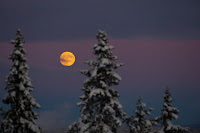Fuerst 1
Richard Fuerst
Mr. Percival
DE Astronomy
12 January 2012
William Rutter Dawes
William R. Dawes was born in West Sussex, England on the nineteenth of March, 1799. His father William Dawes was an astronomer who would later be given the governorship of Sierra Leone for his success with the Eora people in New South Wales. This earned him the nickname of "good mouth", but caused him to miss much of his son's upbringing. William R. Dawes' mother died when he was very young; his father's absence forced him to live with relatives. Initially, the young Dawes was destined to be a clergyman in the Church of England; however , he disagreed with some of the church's tenets and began practicing medicine at Haddenham, Buckinghamshire. It was not until he found himself in Liverpool in 1826 that he became interested in astronomy as a career.
His first observatory was one he had constructed with a refractor telescope that had an aperture of 3.8 inches, which he looked through to make micrometrical measurements of double stars. From this observatory he measured 121 double stars from the period of 1830 to 1833. Soon thereafter he took charge of George Bishop's observatory in Regent's Park, since Bishop was merely a patron of science, not an astronomer like Dawes. For 4½ years, Dawes worked at
Fuerst 2
Regent's Park with a refractor telescope that had a seven inch aperture; during that time he discovered the orbital motion of ∈ Hydrae, γ Andromedae, and Σ 3022. Additionally, he found measurements for another 250 double stars. Dawes also made several notable planetary contributions to astronomy; in 1850 he made meticulous observations of Saturn and its rings. On both the 25th and 29th of November he noticed the dark Crape ring of Saturn. These achievements earned him the Gold Medal of the Royal Astronomical Society in 1855. From 1857 till his death, Dawes lived in Haddenham with his second wife; both were in extremely poor health. In 1860 he lost his wife, but was elected a fellow of the Royal Society in 1865. He continued to observe the heavens until Feburary.15,1868, when he finally departed from this world.
Now why was he known as William "Eagle-eyed" Dawes, and why are certain craters named after him? His fantastic observations with his reflector telescopes were simply astounding. When William Lassell looked at Saturn with his twenty-four inch he missed Saturn's Crepe ring, Dawes did not. In fact Dawes managed to discern the ring with his 6.5 aperture telescope. Other difficult accomplishments by Dawes include: markings on Jupiter's satellites III and IV, a white spot on Saturn (S. lat. 40-45 degrees), the satellite of Neptune, Saturn's inner satellite Mimas, white spots on Jupiter's southern hemisphere, the great Ellipse of Jupiter, and the companion of Sirius. Ironically, Dawes was notoriously near-sighted. His name is also used to describe an optical phenomena that he discovered; the Dawes limit is a formula to express the maximum resolving power in a microscope/telephone. Where R (in arc seconds) is the
Fuerst 3
resolving power of the instrument and D is the diameter of the main lens (aperture), the formula is R = 4.56/D (in inches).








